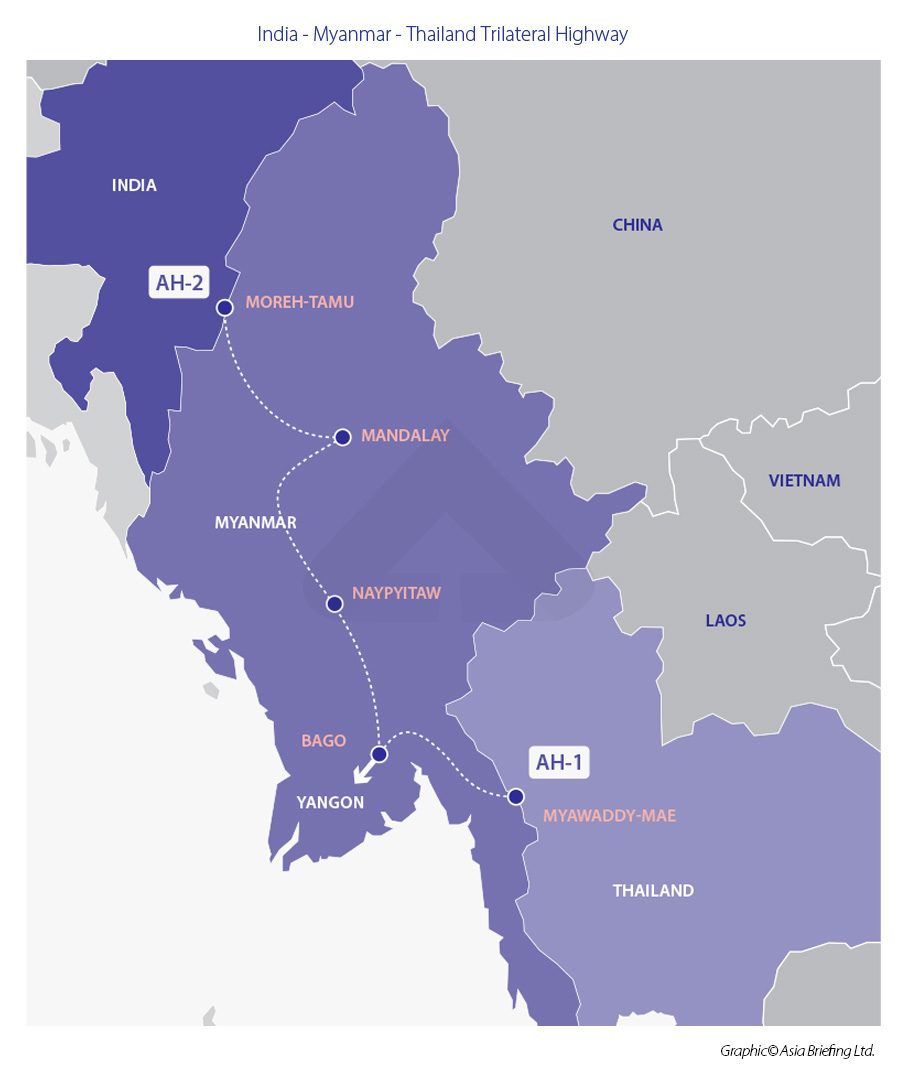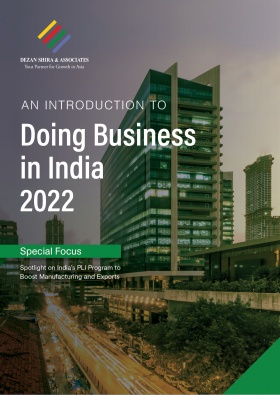India Eager for Expansion of Trilateral Highway to Cambodia, Laos, and Vietnam
India is keen to push for the expansion of the Trilateral Highway to Cambodia, Laos, and Vietnam and increase trade with ASEAN. The highway currently links India to Thailand via Myanmar, stretching some 1,400km. If extended, the new route would total approximately 3,200km.
The highway is also part of India’s Act East policy, a successor to the Look East policy, a diplomatic initiative to promote economic and cultural relations between India and the Asia Pacific region.
India is pushing for the early completion and expansion of the India-Myanmar-Thailand Trilateral Highway to improve connectivity in the region. India’s Prime Minister Narendra Modi further suggested that the highway should expand to Cambodia, Laos, and Vietnam; extending the route to 3,200km from the current 1,400km.
The highway — which was initially conceptualized some 15 years ago — connects India’s Moreh in the northeast of the country to Mae Sot in Thailand, via Myanmar. Although the majority of the highway has been completed, several sections are undergoing upgrades. The highway is part of India’s Look East policy, which was replaced by the Act East policy by Prime Minister Modi’s government in 2014, as a way to improve relations with ASEAN and boost trade in the ASEAN–India Free Trade Area.
The connectivity to Cambodia, Laos, and Vietnam is also seen as a counter to China’s Belt and Road Initiative. However, work on the highway has been slow due to a variety of constraints from lack of qualified human resources, technology, funding, and advisory services.
Complementing the Trilateral Highway is the Kaladan multi-modal transport project in Myanmar, which connects India’s Mizoram state in the northeast to the Sittwe port in Myanmar. The port has been cleared for operations in 2021.
India constructed the deep-water port, which aims to reduce costs for the transportation of goods to landlocked Mizoram. Goods from Kolkata, for instance, can be transported by sea to Sittwe where they are then transferred up the Kaladan river Paletwa in Myanmar’s Chin state. From there, the goods are transported to Mizoram by road.
Boost for India’s Act East policy
India’s Act East policy is a diplomatic initiative to promote economic and cultural relations between India and the Asia Pacific region. This eastward drive started in 1992 under the Look East policy, both are essentially continuing phases of India’s policy towards the Asia Pacific.
In addition to buying weapons from the Soviet Union, India also received technical aid on a wide range of infrastructure and industrial projects. The economy further suffered from the rise in oil prices caused by the Gulf War of 1990-91.
As such, the Indian government was forced to make significant changes to its policies and seek alternative regions, such as ASEAN, to support its economy; here, India had the advantage of having historical relations with the countries in ASEAN. Only Japan – which was the second biggest economy at the time – had significant manufacturing bases in ASEAN, and China was on its way to becoming an economic powerhouse in the Indo-Pacific. Realizing that ASEAN offered huge potential for growth in trade, the Look East policy was launched in 1992.
Growing economic relations
Since the enactment of the Look East policy, India and ASEAN have continued to expand bilateral agreements. India became a dialogue partner with ASEAN in 1996 before signing the ASEAN-India Framework Agreement on Comprehensive Economic Cooperation in 2003. This Framework provided the basis for the establishment of the ASEAN-India Free Trade Area. Further, the ASEAN-India Trade in Goods Agreement (AITIGA) was signed in 2009 and came into force in 2010.
The signing of AITIGA paved the way for one of the world’s largest free trade areas, encompassing more than 1.9 billion people and a combined GDP of over US$5 trillion. AITIGA has resulted in steadily increasing trade between ASEAN and India, with bilateral trade reaching over US$91 billion in 2021. Under the Agreement, ASEAN and India committed to progressively eliminating duties on 76.4 percent of goods and liberalizing tariffs on over 90 percent of goods.
Investment opportunities for northeast India
The increased connectivity brought on by the Trilateral Highway can expand the trade and commerce opportunities of India’s northeast region (NER), particularly for the export of natural resources to ASEAN. Consisting of the states Meghalaya, Mizoram, Nagaland, Tripura, Assam, Manipur, and Sikkim, the NER has significant resources of natural gas, hydropower, and oil. Further, the NER’s agro-climatic conditions produce some of India’s best agro-forestry products, such as rubber and tea.
The NER accounts for some 40 percent of India’s hydropower potential or approximately 58,356 MW, of which 2,027 MW (3.47 percent) was harnessed as of November 2021. India’s Minister of Petroleum and Gas, Hardeep Singh Puri, stated in 2021 that the petroleum industry will play an important role in the NERs industrial development. The government will also aim to increase oil production in the NER is expected to increase by 67 percent in the next four years (2021-2025) from the current average of 4.11 million tons to 6.85 million tons. In addition, the area for crude exploration is expected to expand by 45 percent over the same period.Moreover, the NER produces over 112,000 tons of rubber annually; the NER state of Tripura is the second-largest rubber-producing area in India after the southern state of Kerala. The Indian government hopes the NER can become a hub for rubber production. In 2021, four major tire companies represented by Automotive Tyre Manufacturers Association (ATMA) announced a plan to invest over US$125 million for rubber plantation development spread on 200,000 hectares in the seven states of the NER.
About Us
ASEAN Briefing is produced by Dezan Shira & Associates. The firm assists foreign investors throughout Asia and maintains offices throughout ASEAN, including in Singapore, Hanoi, Ho Chi Minh City, and Da Nang in Vietnam, Munich, and Essen in Germany, Boston, and Salt Lake City in the United States, Milan, Conegliano, and Udine in Italy, in addition to Jakarta, and Batam in Indonesia. We also have partner firms in Malaysia, Bangladesh, the Philippines, and Thailand as well as our practices in China and India. Please contact us at asia@dezshira.com or visit our website at www.dezshira.com.
- Previous Article 2023 Foreign Investment Opportunities in Singapore
- Next Article The Philippines’ 2022 Strategic Investment Priority Plan








